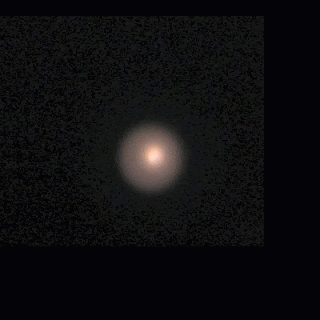I'd thought I'd do something completely different with my Moon shots this time round and completely saturate them, it seems to be the latest fad. I have millions of Moons shots, some saturate a little, some a lot, some not at all.
The above image was taken 10 days ago, the
Lunar Terminator was framing 4 high profile lunar craters, thought it was a perfect photo op took advantage, took the pic.
Plato Crater named after the famous Greek philosopher
Plato is the dark crater situated top middle of the image. half in the shadow of the terminator.
Copernicus is the light crater right of centre of the moon in this shot, named after the Polish astronomer
Nicolaus Copernicus.
Copernicus advanced the
Heliocentric theory of the solar system where the Earth revolves around the Sun, not the other way around. Kepler is the crater just down and to the left of
Copernicus, I like to call it paint ball crater because it looks like someone shot the Moon with a paintball gun. Kepler crater was named after
Johannes Kepler, German astronomer and mathematician first to discover that planet orbit's are ellipses not circles. Finally
Aristarchus is the small bright white crater up and to the left of paintball.
Aristarchus was another Greek philosopher which among other amazing discoveries was the first to come up with the Heliocentric theory of the solar system over a thousand years before Copernicus. Well
that's it, you now know the locations and names of 4 major lunar craters which will help you if they where to casually come up in conversation someday.
All these craters have something special in common, they all have had a number of Lunar Transient Phenomenas or
LTP's for short.
LTP's are any kind of short-lived activities or events seen on the Moon, over the years they have included red glows, flashes,
obscuration and abnormal shadow effects. I belong to the
LTP Research Program as an observer one of my duties is to observe the high repeat offending craters such as the ones above and report any unusual events using special report forms. There is a
hot line number on their website I linked to above , write it down, you just never know when your going to spot an
occurrence.

The
Japanese Space Agency's Lunar Orbiter
Kaguya is now confirmed orbiting the Moon and has sent back a picture of the Lunar surface from 800
kms high. The picture was not taken with its Hi Def cameras so future images will increase in quality substantially when the cameras are set up and running later this month. When the pictures come through I will post them, they should be pretty awesome.
Kaguya's main mission is to understand the Moon's origin and evolution. It is the most comprehensive lunar mission since the Apollo program.

My 3rd. attempt ever of
Saturn, getting bigger and a little more detail, still need it to get a little higher up in the sky and once it gets warmer I'll be able to use my electronic
microfocuser, nearly impossible to manually adjust focus at 650x which is what the above Saturn is. I'll leave you with one last color saturated Moon pic, enjoy.

 Comet Holmes October 27th. 2007, 200x
Comet Holmes October 27th. 2007, 200x  Comet Holmes October 28th. 2007, 200x
Comet Holmes October 28th. 2007, 200x Comet Holmes October 29th. 2007 ,200x
Comet Holmes October 29th. 2007 ,200x






























